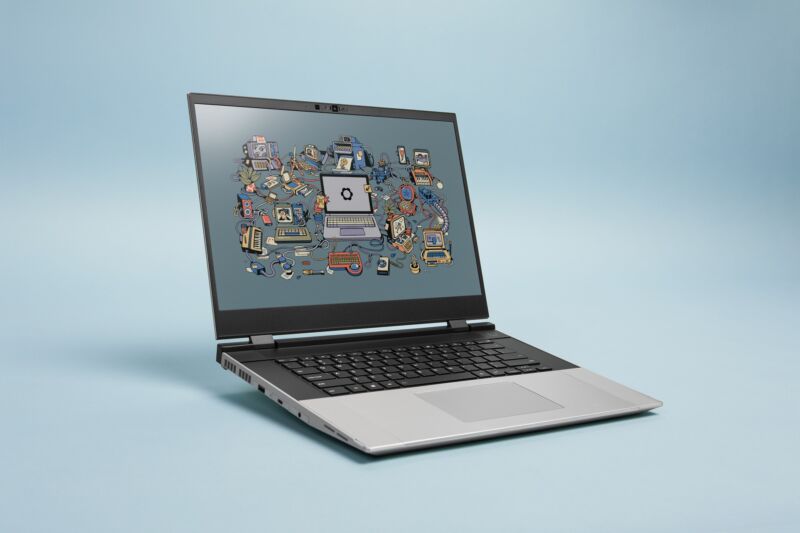
Framework
We were skeptical at first, but Framework has delivered on the promise of its original 13-inch laptop. Three product generations in, the company has made a respectable competitor for the Dell XPS 13 or MacBook Air that can be repaired, modified, and upgraded, and owners of the original laptop can easily give themselves a significant performance boost by upgrading to the new 13th-generation Intel or AMD Ryzen-based boards the company announced today.
Framework is now looking to build on that track record with an all-new Framework Laptop 16. It’s a larger-screened model that can fit more powerful processors, dedicated GPUs, and a range of different keyboard modules, all with the same commitment to repairability and upgradeability seen in the original Framework Laptop (now retroactively dubbed the Framework Laptop 13).
Framework isn’t discussing many details yet; preorders won’t open until « this spring, » and shipments won’t begin until « late 2023. »
Today, the company provided a preview of the laptop’s features, along with developer documentation to encourage the creation of new Input Modules—components that allow for keyboard customization much like the current Expansion Card system allows for port customization.
It’s not just about the GPU
Input Modules were born of the desire to solve the number pad problem for large laptops: do you use the extra space to build in a number pad while making the rest of the keyboard feel potentially cramped or off-center, or do you make a keyboard with no number pad and risk wasting a bunch of space?
« After performing some market research, we found out there is almost exactly a 50/50 split between people who love and need numpads and people who hate them, » Framework’s blog post says. « We used this as an opportunity to not only let you pick your preference there, but also completely customize the input experience. »
Input Modules come in three sizes: small, medium, and large. Large modules are for the keyboards themselves, and Framework says it will offer both white backlights and RGB backlights for its first-party modules. Medium modules can fit number pads, but they’re also big enough to accommodate other kinds of input devices, including « jog wheels, sliders, touchscreen displays, e-ink notepads, smartcard readers, and more. » And small modules are mostly meant for cosmetic customization, though Framework says that « it’s also possible to build functional modules like an LED Matrix or haptic slider. »
All modules can be up to 3.7 mm tall and still fit into the Laptop’s case. « Many » of Framework’s first-party modules will use open source firmware and a Raspberry Pi RP2040 microcontroller, opening them up to further customization by developers and end users.
-
The Framework Laptop 16 with no Expansion Bay installed. (You can also see a hint of a keyboard with a numpad if you look.)
Framework -
The laptop with an Expansion Bay installed. It sticks out from behind the lid, not unlike the design of many 17-inch gaming laptops.
Framework










